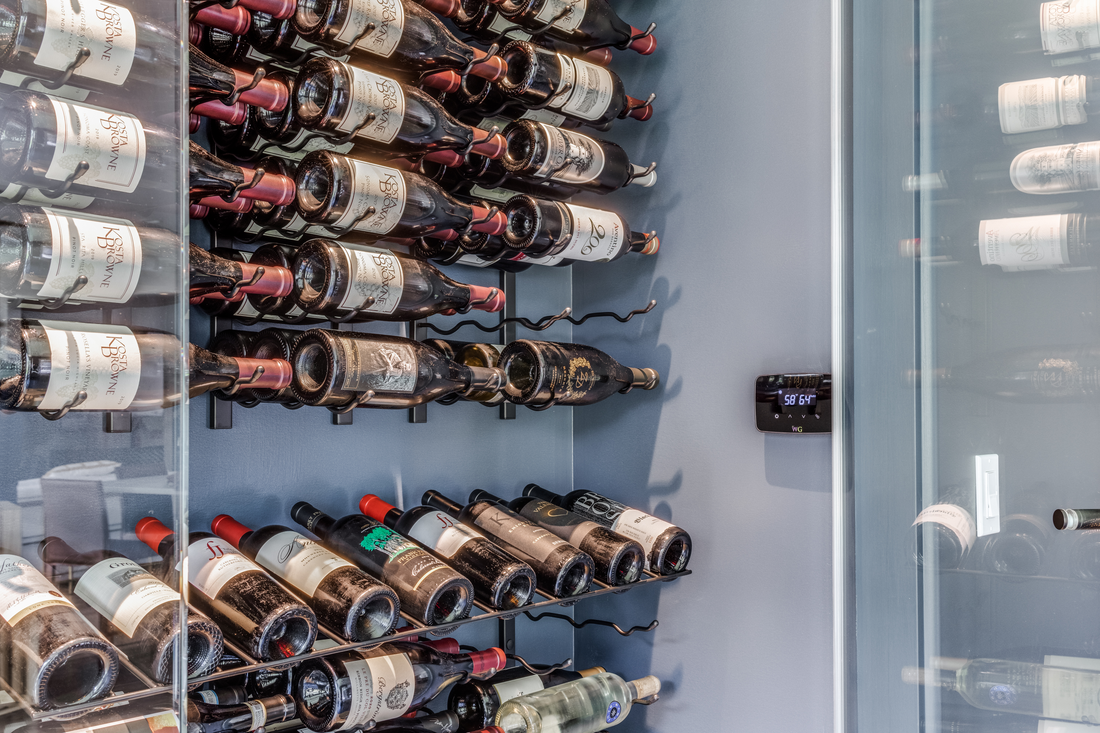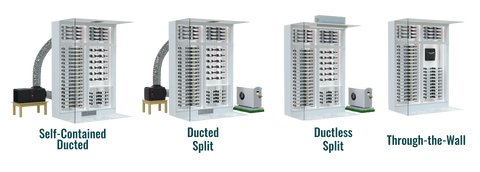The key to ensuring the perfect aging environment for wine lies in maintaining consistent temperature and humidity levels in a wine cellar. The proper refrigeration system plays a vital role in wine cellar cooling. In this blog, we will provide guidelines for optimal temperature and humidity levels as well as explaining the various types of climate control systems used for wine cellars. We will explore the unique features and benefits of each type of system.
Optimal Temperature Considerations
When it comes to storing wine, understanding the optimal temperature is crucial. Red wines, known for their robust nature, have a greater tolerance for heat compared to whites. For red wines, the recommended storage optimal temperature falls between 50°F and 59°F. While white wines can be stored within this range, some purists prefer slightly cooler optimal temperatures, typically ranging from 45°F to 50°F for added precaution.
Humidity Considerations
Humidity plays a crucial role in proper wine storage, especially in relation to the condition of corks. A relative humidity (RH) level of around 70% is recommended. This level of humidity helps preserve the integrity of corks over extended periods, maintaining an effective seal within the bottles. However, it's important to avoid excessive humidity, exceeding 70%, as this could result in mold growth and potential deterioration of labels and adhesive.
Conversely, low humidity levels below 50% can have adverse effects on cork condition. Insufficient humidity may cause corks to dry out, potentially leading to the loss of liquid within the bottles and contributing to the degradation of the wine itself. Maintaining the right balance of humidity is key to safeguarding the quality of your stored wines.
Climate Control Systems
Wine cellar cooling systems are specialized air conditioning units designed for the optimal preservation of wine rooms. The key to any cooling system is a cellar built with proper insulation, moisture barrier and a high R-Value in the walls, ceiling, and potentially the floor. When used in a properly insulated wine room, cooling systems work to establish the perfect storage environment for wine, ensuring a constant equilibrium of optimal temperature and humidity. Through programmable settings, the cooling systems can be configured to function within designated optimal temperature and humidity thresholds, activating when ambient optimal temperatures veer too high and deactivating when they dip too low. Wine cellar cooling systems offer audible and visual alarms when the temperature or humidity falls outside of their preset settings. Many manufacturers also offer water-cooled systems which are ideal for geothermal, cooling tower, or lake water applications.
Self-Contained Ducted Cooling Unit
A self-contained cooling system houses the evaporator, condenser, fans, compressor, and controls in a single unit and is located outside of the cellar. A grill located inside the cellar is connected to insulated, flexible supply and return ducts and are routed to the self-contained unit. The system can be placed in a nearby mechanical space, so no mechanical equipment is visible inside the cellar and any cellar noise is reduced or eliminated. The unit can also be ducted outside to dissipate excess heat from the space. Self-contained ducted systems are suitable for small or large wine rooms with several sized units available.
Ducted Split Cooling Unit
A ducted split cooling system offers maximum installation flexibility. Unlike the self-contained ducted units, the evaporator and condenser are housed separately but are designed to work together to ensure proper optimal temperature and humidity are always maintained. The evaporator is installed indoors in a nearby mechanical space with supply and return air ducted to and from the wine room. The condenser is installed outdoors with a copper line set running back to the evaporator. Ducted split cooling units are ideal when mechanical space is limited, long duct runs are needed, or condenser air is difficult to exhaust.
Ductless Split Cooling Unit
A ductless split climate control system is best when ductwork is not an option. The evaporator and condenser are separate, with the evaporator inside the cellar. Many provide low-profile designs to fit seamlessly into the wall or ceiling of the space. The remote condensing unit is connected to the evaporator by a copper line set. These systems are ideal when there is no available mechanical space to house the unit or run ductwork. A ductless split system is ideal for wine rooms with no room for ductwork, or there is no mechanical space available, or condenser air is difficult to exhaust. This system is often used in wine rooms under stairs.
Through-The-Wall Cooling Unit
This wine room cooling system is often chosen for its easy installation and operation. Installation requires mounting the unit in the wall of the cellar, attaching the drain line and plugging the unit into a standard electrical socket. Typically, no other structural modification is needed to equip a wine room with a through-the-wall cooling unit. These units are sized for smaller wine rooms and are a cost-effective option for DIY projects.
Achieving the ideal aging conditions for wine hinges on upholding steady temperature and humidity levels within a wine room. Selecting the right climate control system for your wine room is crucial to preserving the integrity of your prized wine collection. Each type of system offers distinct advantages, catering to different cellar sizes and requirements. No matter which system you choose a ducted, ducted split, ductless split, or a through-the-wall system, the key lies in maintaining the perfect environment for your cherished bottles to age gracefully and bring joy to your palate for years to come.
For over 20 years Vineyard Wine Cellars has worked with designers, architects, builders, and HVAC professionals to help navigate the requirements for a well-built wine cellar. To learn more about what goes into a wine cellar build, download our wine cellar design checklist found here.
If you need help determining the right size and type of cooling system connect with one of our wine cellar experts here.




